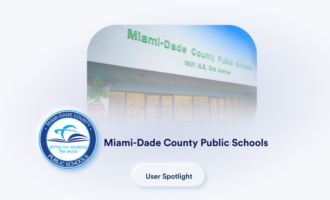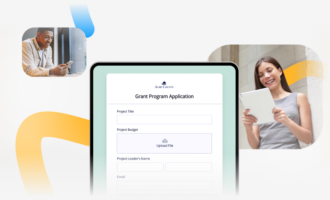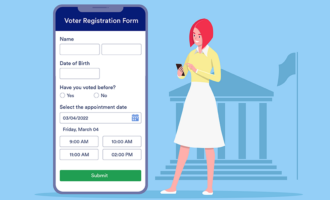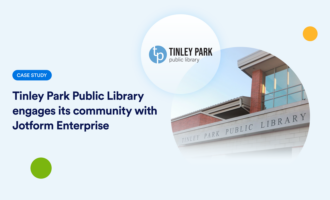Top 5 challenges of government digital transformation
- Local and national security risks
- Organizational silos
- Insufficient resources
- Skills gaps
- A change-averse culture
In most industries, the shift to implementing digital technologies (also known as digital transformation) appears to be well underway. Spending on digital transformation is projected to increase at a compound annual growth rate of 21.1 percent between 2022 and 2027. Plus, almost 75 percent of global organizations named digital tech adoption as their leading IT priority in 2022.
Governments are also striving to go digital. While they’ve made progress, a 2021 McKinsey survey showed that not all efforts have been successful, with 78 percent of government organizations stating that their transformation programs didn’t achieve their objectives or took longer than expected.
Why the difficulty? Governments face many of the same challenges as other organizations, but they also have some unique issues that can make transforming even harder. (The public sector’s success rate is higher, around 30 percent.) But it’s worth pushing forward, as 77 percent of government agencies have already seen a positive impact from initiatives launched during the pandemic.
In this article, we look at the most common government digital transformation challenges and offer solutions that can help overcome these issues. Plus, we’ll show you how Jotform Enterprise can support your government agency as it undertakes this leap into the digital world.
5 government digital transformation challenges (and solutions)
1. Local and national security risks
Cybercrime, such as data breaches, identity theft, and phishing, are very real threats associated with digital transformation. Most government agencies, which offer a lot of in-person services and often have paper-based records, aren’t familiar with this type of threat or how to combat it. It can make government agencies feel vulnerable.
“Robust security measures must be in place to protect sensitive data,” says Aja Brown, former mayor of Compton, California, and senior director of impact and communications at FORWARD, a program administration platform for the public sector.
Security protection should take a multi-pronged approach. The technology agencies acquire must be highly secure and include data encryption and other features. In addition, public sector leaders need to educate employees about the new security risks they face and how they can thwart them through security protocols and processes.
2. Organizational silos
Many government departments exist in silos, with little to no communication or collaboration between them. For example, within a single government agency, there may be two separate, parallel departments that never interact. Each department may have the same technology needs, but if they don’t communicate with each other, they may end up purchasing two different digital software solutions for their departments. As a result, they miss out on the advantages of using common technology and sharing data.
Thanks to silos, “Government employees are left grappling with a hodgepodge of technologies that serve overlapping functions but don’t integrate,” says Justin Insalaco, a retired police officer and a strategic adviser to Atlas One, which offers public safety digital communications.
“Each system carves out its own little niche, operates in a silo, and hoards its data,” he says. “The end result? A system that’s at cross purposes with itself. And it’s this lack of interconnectedness, with each piece of technology serving a slightly different set of stakeholders, that blurs the understanding of what’s working and what’s not.”
In order to overcome these silos, the public sector needs leaders who are able to bring different departments and sectors together. To prevent silos once the digital transformation has taken place, government agencies need collaborative workspaces where employees from different parts of the agency can communicate, share information, and serve their constituents together.
3. Insufficient resources
Time, money, and people — these are the elements every government agency needs to launch and implement a digital transformation. However, a sufficient supply of those resources isn’t always available. Digital transformations can take years, and even after an organization has integrated the technology into the day-to-day workflow, there will be an ongoing need for tech maintenance and support.
Government agencies need to carefully select digital transformation technology solutions that are affordable, easy to implement, and easy to learn. This not only reduces the amount of resources required, but it also gets public sector leaders on board more easily. Digital transformation initiatives require internal champions in addition to personnel or even departments whose job it is to manage change and help employees learn the new systems and processes.
4. Skills gaps
For some government employees, learning to use new digital solutions is an easy task. For others, it’s an uphill battle.
It’s natural to have people with a variety of skills — and skills gaps — within a government agency, and public sector leaders need to find ways to bridge those gaps through training, experience, mentorship, and other avenues. This may mean hiring outside technology experts to support the internal team during periods of intense change or running continuous training and support workshops until all employees feel confident in their new systems and processes.
The skills gap may also extend to your constituents. For example, some members of the public may not know how to use a new digital system to book appointments or submit registrations. Government agencies should always provide clear and understandable written and/or video instructions for using the new digital systems or continue to offer analog services alongside the digital ones for a period of time.
“Consider phased rollouts to troubleshoot issues and mitigate risks,” says Brown. With an incremental implementation, government agencies can work to close the skills gap step by step while reducing the risk of implementation and operational issues on a large scale.
5. A change-averse culture
Sometimes, the biggest challenges to a successful digital transformation initiative are intangible. It’s not about the resources or the time, the organizational structure or cybersecurity. Sometimes, the obstacle holding back a government agency from moving forward is the internal culture, as when employees at every level are fixated on change as negative.
Longtime employees may be comfortable with their current processes and workflows and may not see a need for a digital overhaul, while others may feel threatened by the digital transformation and how it will affect their jobs. It’s possible some people also just won’t want to learn new skills and would prefer doing things the way they’ve always done them.
This type of obstacle is difficult but necessary to overcome. A cultural shift must take place in order for the digital transformation to succeed. Public sector leaders can start the cultural reset from the top down, showing how a digital transformation will benefit employees as well as the public.
In addition, education can play a major role in making a cultural shift. Government agencies need to deal with the fears that employees may be facing by shedding light on what a digital transformation really is and how it will benefit them in the long run. A change-averse culture can derail a successful transformation if leadership doesn’t deal with it from the start.
Jotform: A powerful way to resolve digital transformation challenges for government
For government agencies and departments at all levels, Jotform offers Jotform Enterprise, an easy and effective way to manage all your data digitally.
Municipal and state government departments, police departments, departments of education, and more use Jotform Enterprise to collect, store, manage, and analyze the data they collect from employees and constituents via employment forms, registration forms, applications, and so much more.
Security is paramount for government organizations, and that’s equally true for Jotform. With Jotform Enterprise, all form data is stored on dedicated servers with 256-bit SSL encryption, and any payment transactions meet the highest standard of PCI DSS Level 1 certification. If governments require special compliance with specific regulations or standards, such as SOC 2 Type II and HIPAA, Jotform Enterprise can also meet those needs.
Government departments can access hundreds of data-collection form templates and customize them to fit their needs using Jotform’s drag-and-drop form builder. Plus, users can set permission controls so the right people have access to the right documents.
Jotform also integrates with many cloud storage solutions, payment processors, project management solutions, and communication tools, so government employees can have a seamless work experience while constituents have a seamless user experience.
We’ve been very pleased with how easy it was to integrate Jotform Enterprise into our workflow. It’s been revolutionary for us.
Jiku Park, information technology manager for the County of Marin
While an initiative as large as a digital transformation is bound to present challenges, Jotform Enterprise can help government departments and agencies navigate them with ease. Read our case study on how the County of Marin uses Jotform for digital data collection or contact us to start your digital transformation today.
Photo by Kampus Production




























Send Comment: